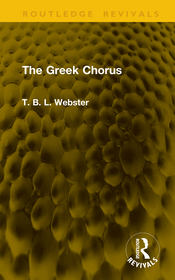
Dance, Embodied Politics and Court Culture in Early Modern Spain
The Poetics Turn
Sorozatcím: Monografías A; 412;
-
20% KEDVEZMÉNY?
- A kedvezmény csak az 'Értesítés a kedvenc témákról' hírlevelünk címzettjeinek rendeléseire érvényes.
- Kiadói listaár GBP 130.00
-
62 107 Ft (59 150 Ft + 5% áfa)
Az ár azért becsült, mert a rendelés pillanatában nem lehet pontosan tudni, hogy a beérkezéskor milyen lesz a forint árfolyama az adott termék eredeti devizájához képest. Ha a forint romlana, kissé többet, ha javulna, kissé kevesebbet kell majd fizetnie.
- Kedvezmény(ek) 20% (cc. 12 421 Ft off)
- Kedvezményes ár 49 686 Ft (47 320 Ft + 5% áfa)
Iratkozzon fel most és részesüljön kedvezőbb árainkból!
Feliratkozom
62 107 Ft

Beszerezhetőség
Még nem jelent meg, de rendelhető. A megjelenéstől számított néhány héten belül megérkezik.
Why don't you give exact delivery time?
A beszerzés időigényét az eddigi tapasztalatokra alapozva adjuk meg. Azért becsült, mert a terméket külföldről hozzuk be, így a kiadó kiszolgálásának pillanatnyi gyorsaságától is függ. A megadottnál gyorsabb és lassabb szállítás is elképzelhető, de mindent megteszünk, hogy Ön a lehető leghamarabb jusson hozzá a termékhez.
A termék adatai:
- Kiadó Boydell & Brewer Ltd
- Megjelenés dátuma 2025. december 23.
- Kötetek száma Print PDF
- ISBN 9781855664067
- Kötéstípus Keménykötés
- Terjedelem480 oldal
- Méret 234x156 mm
- Súly 666 g
- Nyelv angol
- Illusztrációk 19 b/w illus. 700
Kategóriák
Rövid leírás:
Does dance tell a story? What, if anything, is it intended to represent? How was it conceived in the early modern period?
TöbbHosszú leírás:
Does dance tell a story? What, if anything, is it intended to represent? How was it conceived in the early modern period? This book examines the theories and political uses of dance in Spain during the period preceding and following the 'Poetics turn', which coincided with the rule of Philip III (1598-1621), also known as the Dancing King, and the onset of the reign of Philip IV. While this turning point finalised the definition of dance as an art form, it was also paradoxical. Indeed, this development saw the emergence of an aesthetic thought of dance within Aristotelian poetics, thanks to a common court culture, yet it never led to the formulation of a poetics of ballet. By recontextualising this turning point, the book examines the relationship between dance and representation during Spain's Golden Age. It revisits the initial codifications of dance in Italy and figurative experiments at the Burgundian court during the second half of the 15th century, as well as their influence on subsequent practices and humanist theories of dance at the courts of Charles V and Philip II. Subsequently, it focuses on the various shifts in court dance as it became a scenic art at the beginning of the seventeenth century, interrogating the possibility of the king performing dance himself. The book concludes that, in Spain, neo-Aristotelian ideas enabled a shift from an ethical to an aesthetic problematic, which saw dance, whether symbolic or purely kinetic in nature, as a legitimate art form to be placed at the service of the monarchy.
TöbbTartalomjegyzék:
List of Illustrations Acknowledgments Introduction Part I. The Ethical Age of Dance 1. Disciplinary Foundations 2. Festive Culture and the Figurative Regime of Dance Part II. Dance and the King's Body 3. Humanist Enthusiasm in the Age of Charles V 4. How Can Dance Be Condemned When the King Dances? Part III. The Poetics Turn 5. Italian Mediations 6. The Body in Movement. Dance in Philosophía antigua poética (1596) Part IV. The Stage Turn 7. Mutations in Court Dance 8. González de Salas, Dance Historian and Editor of Bailes 9. Counterpoint: A French Poetics of Dance Conclusion Bibliography Index
Több







